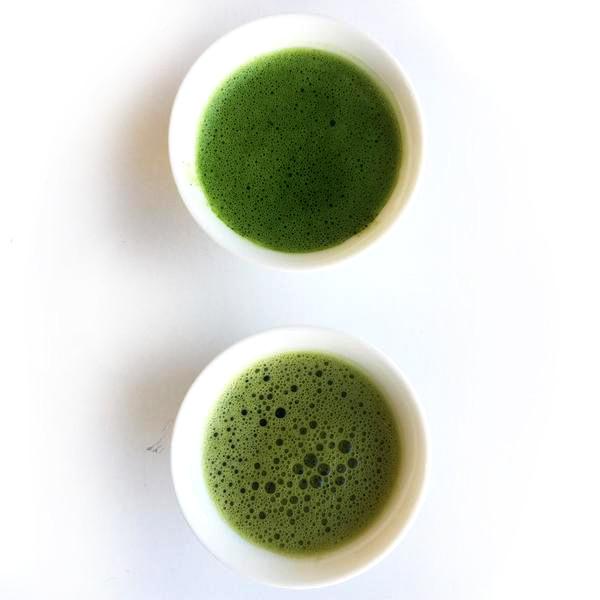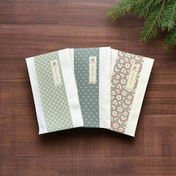#0773.K6 Yunomi.Matcha: 宇治の味 - 貴船、皇室典礼グレード
#0773.K6 Yunomi.Matcha: 宇治の味 - 貴船、皇室典礼グレード - 30g / 1オンス / 詰め替え用バッグ(ギフト缶&ボックス入り) 【在庫切れ】取り寄せ中につき、入荷次第発送します。大きいサイズを小さい袋に小分けするには1-2週間、取り寄せは2-3週間がかかりますが、商品によって異なります。現在、各メーカーの抹茶生産は非常に時間がかかり、1-3ヶ月間がかかる場合もあります。
受け取りを利用可能か読み込めませんでした
商品が在庫切れの場合は、ウィッシュリストに追加して、商品が購入可能になったときにメールで通知を受け取れるようにしてください。
配送と送料について
配送と送料について
送料は国、配送業者、配送方法によって異なります。商品を在庫に追加し、カートページに移動して送料見積もりツールをご確認ください。一部の国では、ご購入後に手動で送料を計算する場合があります。
YUNOMI.LIFEの配達保証:追跡番号付きの航空便で発送されるすべての注文の配達を保証します。 (条件が適用されます。通知された例外。)まれに、輸入のために追加の通関手続きが必要になる場合があります。私たちは最大限に支援いたします。お客様の過失によらず、発送から1ヶ月以内に注文が届かない場合は、追加料金なしで注文を交換または返金いたします。お客様の住所への配達が困難であると判断した場合、当社は出荷を拒否する権利を留保します。この保証は、受取人が通関手数料および輸入税の支払いを怠ったり拒否したりした場合、郵便局または配送センターで保留中の注文の受け取りを怠った場合、または間違った住所のために注文が配達できない場合には適用されません。Yunomi.lifeの配達保証は卸売購入には適用されません。
濃厚なうま味とクリーミーな舌触り、そして渋みの少ない、京都宇治産の素晴らしい抹茶です。
湯呑茶商 イアン:この抹茶は、京都市北部の貴船村にちなんで名付けました。貴船村には、雨水神、そして海の守り神として祀られている貴船神社があります。京都で文学を学んでいた頃も、その後京都を訪れた時も、この地域には懐かしい思い出があります。貴船神社への参道は年々観光客が増えていますが、祇園などの京都の主要エリアに比べると、とても静かな日帰り旅行先として最適です。このエリアのハイライトの一つは、涼しい渓流を見下ろすテラス席のあるレストランで、暑い夏には抹茶パフェに最適です。
湯呑み評価 - 87/100
当社独自のテイスティングに基づき、この製品のプロファイルは以下のとおりです。ただし、並行してテイスティングを行っているわけではないため、水や室温などの違いにより結果が異なる場合があります。このプロファイルはあくまで目安としてご利用ください。
- うま味:18/20(20が最もうま味が強い)
- クリーミーさ:18/20(20が最もクリーミー)
- 渋みの少なさ:17/20(20が最も渋みが少ない)
- 苦味の少なさ:17/20(20が最も苦味が少ない)
- 食感:8/10(10が最も滑らかな挽き心地)
- 色: 9/10 (10が最も緑色で鮮やかな色)
製品詳細
- 原材料:緑茶。
- 収穫時期:春(この価格でこの風味を実現するために、今年と昨年の茶葉をブレンドする場合があります。)ブレンドにおいては、最終的な抹茶の風味を重視しています。
- 包装: 再封可能な外袋の中に銀色のビニール袋が入っています。
- 地域: 京都で栽培、粉砕されています。
- 保存方法:30グラム入りの袋1つは、日常使い用にスクリューキャップ付きの缶または再封可能な袋に入れて室温で保存し、残りは複数ご購入の場合は冷凍庫で長期保存することをお勧めします。注意:冷凍保存する場合は、鮮度を最大限に保ち、他の食品の臭いが抹茶に影響するのを防ぐため、ジップロックとタッパーウェアで二重に密封してください。開封前に必ず24時間置いて室温に慣らしてください。こうすることで、結露による抹茶パウダーの劣化を防ぐことができます。
抹茶30グラムでどれくらい作れますか?
抹茶の濃さや量によって異なりますが、100mlのカップを作るのに1グラム(小さじ1/3程度)を使用すると、抹茶は30杯分になります。
抹茶は挽きたてが一番美味しいってご存知ですか?
抹茶の良し悪しは、もちろん原料となる茶葉の品質に左右されます。しかし、生産者は様々な農家から様々なロットの茶葉を購入します。彼らの技術、つまりマスターブレンダーと呼ばれるのは、茶葉を挽く前にブレンドし、粉の色、粉の香り、粒度、抹茶の色、そして何よりも抹茶の風味といった、特定のプロファイルを作り出すことにあります。
秋の収穫時期は品質に大きな違いをもたらします。秋の収穫直後(5月~8月)は、特に春の収穫直後は、収穫年は必ずしも重要ではありません。この時期の茶葉は、うま味が強く、苦味も強いため、良い抹茶を作るには新しすぎる場合があります。一方、1年熟成した茶葉は、よりまろやかになり、新茶とのバランスをとるのに最適です。
しかし、抹茶は挽いた後すぐに古くなります。挽いてから6ヶ月で色が褪せ、香りも消えてしまいます。9ヶ月経つと、風味も薄れてしまいます。そのため、日本では高級抹茶の賞味期限は3~6ヶ月であるのに対し、低級抹茶の賞味期限は12ヶ月となっています。一方、欧米のブランドでは18~24ヶ月の賞味期限が設定されていることが多いです。
原則として、Yunomiブランドの抹茶は挽いてから6か月以内、その他のブランドの抹茶は仕入れから6か月以内とするよう努めております。
ただし、ほとんどの商品は毎月仕入れられます。つまり、回転率が高いということは、新鮮な抹茶をお届けできるということです。
-
旨味非常に強い
支払いのセキュリティー対策
支払い方法
お支払い情報は安全に処理されます。当社はクレジットカード情報を保存したり、お客様のクレジットカード情報にアクセスしたりすることはありません。







